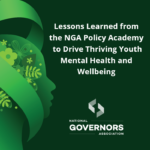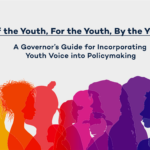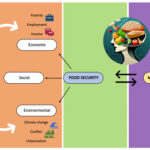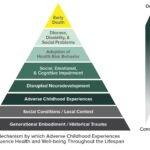
Children and Families
Governors and state leaders play a critical role in the protection and support of vulnerable children, families, and individuals. The Children and Families (C&F) team provides timely and individualized state-focused technical assistance to Governors, their human services policy advisors, and state agency leadership so they can improve policies and systems that will allow children, families, and communities to reach their full potential. With an emphasis on helping States develop opportunities and policies that support all communities, the C&F team aids Governors to advance and fulfill their vision for the children and families in their states.
Our Focus Areas
- Whole-family approaches to serving children and families
- Youth mental health
- Early childhood education and care
- Integrated data and delivery systems for human services programs
- Food insecurity, nutrition, and hunger abatement
- Reducing barriers to opportunity and economic mobility
- Family economic security and anti-poverty solutions
- Foster care, kinship, and adoption
- Child abuse prevention and treatment
- Juvenile justice
- Housing and homelessness
Meet The Team
- Jordan Hynes
Program Director - Jess Kirchner
Senior Policy Analyst - Eli McCabe
Senior Policy Analyst - Ekaan Ahmad
Policy Coordinator
Major Initiatives
Policy Academy on Strengthening Youth Mental Health
This Policy Academy builds on last year’s Chair’s Initiative on Strengthening Youth, Led by Governor Murphy of New Jersey. NGA will support up to 6 states in intensive technical assistance and strategic planning to implement the Chair’s Initiative Playbook through 4 main policy pillars:
- Prevention and Resilience
- Increasing Awareness and Reducing Stigma
- Access and Affordability of Quality Treatment and Care
- Caregiver and Educator Training and Support
NGA Child Care Community of Practice (CoP):
The National Governors Association convenes this CoP for Governors’ policy advisors and agency representatives, which serves as a forum for open discussion and brainstorming about child care delivery at the state/territory level. NGA’s Child Care CoP convenes virtually on an ad-hoc basis with opportunities for peer-to-peer sharing, identifying best practices, and hearing from national partners and experts. The CoP is an open group for advisors and agency representatives focused on identifying opportunities under the Governors’ purview to improve child care in their states.
Children & Families Core Advisors Board
The NGA Children and Families Team established the Core Advisors Board (CAB) to provide feedback on governors’ top priorities impacting the lives of children and families. Each year, a small group of governors’ human services policy advisors and agency leaders are selected to provide critical input and feedback on the structure and content of the NGA Center’s work with the states on human services and early childhood education and care issues.
Human Services Policy Advisor Institute
The Human Services Policy Advisors Institute is a network of governors’ policy advisors and state leaders from social services and children and family-serving agencies that comes together on a monthly call to share innovations and best practices for serving the complex needs of children and families. This network serves as a regular check-in for updates, content, peer-to-peer exchanges, and networking for policy advisors to discuss multidisciplinary policy considerations. Recent topics include: Human Services Workforce; Integrating Eligibility Screening Systems; and Supporting Older Populations.
Children and Families Library

National Governors Association and Third Sector Select Four States to Enhance SNAP Employment & Training Programs

Governors’ Perspectives on Addressing Child Care Needs: Supply and Demand Trends to Watch

Lessons Learned from the NGA Policy Academy to Drive Thriving Youth Mental Health and Wellbeing

State Strategies for School-Based Mental Health Services

NGA Hosts Webinar with First Lady Jennie Gordon, Highlights Strategic Partnerships First Spouses Form to Advance Initiatives

Of the Youth, For the Youth, By the Youth: A Governor’s Guide for Incorporating Youth Voice into Policymaking

Policy Academy to Strengthen SNAP Employment & Training Delivery

Food is Medicine: Making Nutritious Food Accessible to All

Addressing The Link Between Trauma And Addiction

SUN Bucks Basics for Governors: A Summer EBT Program Primer

2024 Health and Human Services Policy Advisors Institute

